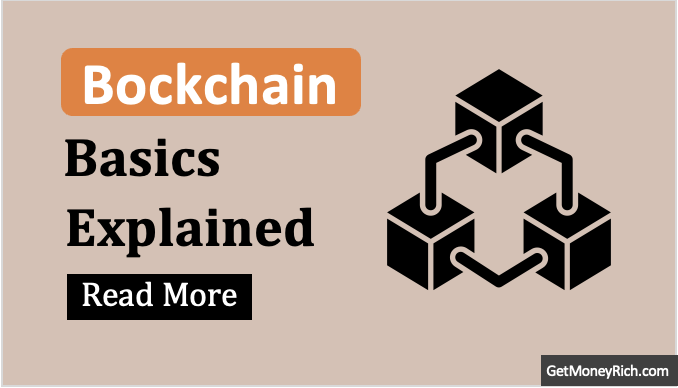So, I got a message the other day from someone who’s been investing stocks and mutual fund for years. But he is now curious about dipping his toes into the wild world of cryptocurrency, (Bitcoin). And I thought, why not explore what’s best in available in India for guys like this. If you too are like him, someone with investing experience but new to crypto, this post is for you. I’m going to explain step-by-step, in a practical way. No jargon-heavy nonsense, just the stuff you can actually do to get started with Bitcoin in India. Let’s begin.
Step 1: Get the Basics
Alright, before we jump into wallets and exchanges, let’s set the stage.
Bitcoin is like the rockstar of cryptocurrencies, a decentralized digital currency that runs on something called blockchain. Imagine of it as a ledger that’s tamper-proof and global. You don’t need a bank to deal in Bitcoin; you just need a way to buy, store, and manage it.
Coming from stocks, you’re probably used to bank accounts, brokers and Demat accounts, crypto’s got its own version of that, and I’ll walk you through it.
Since you’re in India, here’s the good news, buying Bitcoin is legal.
The Supreme Court lifted the RBI’s ban on crypto in 2020, so we’re in the clear.
But yes, the government’s still figuring out regulations, so expect some tax stuff (more on that later). For now, let’s focus on getting you started.
Step 2: Pick a Reliable Crypto Exchange
The first thing you need is a platform to buy Bitcoin.
In India, we’ve got some solid options, think of these as your Zerodha or Upstox, but for crypto.
Here are my top picks:
- WazirX: Super popular, easy to use, and India-focused. It’s like the go-to for beginners.
- CoinDCX: Another user-friendly one with a clean app and good customer support.
- Binance: A global giant. It’s not Indian, but tons of us use it because of its variety and low fees.
What do I recommend? If you’re just starting, go with WazirX or CoinDCX. They’ve got INR (Indian Rupee) support built in, so you don’t have to mess with currency conversion right away.
Binance is great too, but it might feel overwhelming if you’re new.
What to do: Download the app (or visit the website), sign up with your email, and get ready for the next step.
Step 3: Complete Your KYC
Here’s where your stock market experience comes in handy. You’re probably no stranger to KYC (Know Your Customer).
In India, crypto exchanges are regulated under anti-money laundering laws, so you’ll need to verify your identity.
What to do:
- Log into your chosen exchange.
- Head to the KYC section (usually under your profile).
- Upload a government-issued ID (Aadhaar, PAN card, or passport – PAN is mandatory) and a selfie.
- Wait for approval, it usually takes a few hours, sometimes a day.
My Tip: Use the same PAN card you’ve linked to your stock investments. Keeps things consistent, especially for taxes later.
Step 4: Add Money to Your Wallet
Once your KYC is done, it’s time to fund your account.
This is like transferring cash to your broker before buying shares. Most Indian exchanges let you deposit INR directly.
What to do:
- Go to the “Funds” or “Wallet” section.
- Choose “Deposit INR.”
- Link your bank account (via UPI, NEFT, or IMPS, I love UPI because it’s instant).
- Transfer some cash. Start small, maybe Rs.5,000, to test the waters.
The money will show up in your exchange wallet. Now you’re loaded and ready to buy!
Step 5: Buy Your First Bitcoin
Here’s the fun part, actually getting your hands on Bitcoin.
Don’t worry, it’s not as complicated as it sounds.
What to do:
- On the exchange, look for the “Trade” or “Buy/Sell” tab.
- Search for “BTC/INR” (Bitcoin paired with Indian Rupee).
- You’ll see the current price, say, Rs.72.48 lakh per Bitcoin (yes, it’s that pricey. But you don’t have to buy a whole one quantify. You can buy in fractions). This is what makes Bitcoin trading unique.
- Enter how much you want to spend, like say Rs.1,000. The platform will calculate how much Bitcoin you’ll get (a tiny fraction, like 0.000138 BTC).
- Hit “Buy,” confirm the transaction, and boom, you’re a Bitcoin owner.
It’s that simple. You can buy fractions of a Bitcoin (called Satoshis), so don’t let the big price tag scare you off.
Step 6: Store It Safely (Don’t Leave It Hanging)
Now that you’ve got Bitcoin, think about where to keep it.
By default, it sits in the exchange’s wallet, like how your shares sit in a Demat account.
But here’s the thing, exchanges can get hacked (read this example of Mt. Gox). For small amounts, it’s fine to leave it there, but if you’re planning to invest more, get a personal wallet.
What are the options?
- Software Wallets: Free apps like Trust Wallet or Exodus. Easy to set up on your phone or laptop.
- Hardware Wallets: Physical devices like Ledger Nano S or Trezor. Costs Rs.5,000–10,000 but super secure.
What to do?
- Download a software wallet (say, Trust Wallet).
- Set it up, it’ll give you a 12-word “seed phrase” (write it down and hide it somewhere safe; lose this, and your Bitcoin’s gone).
- Transfer your Bitcoin from the exchange to your wallet (copy your wallet’s address, paste it in the exchange’s “Withdraw” section).
This step’s optional for tiny investments, but I’d say it’s worth it for peace of mind.
Step 7: Keep an Eye on Taxes
Coming from stocks, you know taxes are a thing. Crypto’s no different in India.
Since 2022, we’ve got a 30% tax on crypto profits (I know it hurts) plus a 1% TDS (tax deducted at source) on every transaction above Rs.10,000.
What to do?
- Track your buys and sells (exchanges usually have a transaction history).
- Report profits in your ITR (Income Tax Return) under “Capital Gains.”
- Use a tool like Koinly or CoinTracker if you’re doing lots of trades, it syncs with exchanges and does the math for you.
It’s a hassle, but staying legit keeps the taxman off your back.
Step 8: Start Small, Learn, and Scale Up
You’re in Now, treat Bitcoin like you did stocks when you started, don’t go all-in on day one.
The crypto market is wild; prices can jump 10% or crash 20% in a day. Start with what you’re okay losing (Rs.5,000 – 10,000 is a good test run). Watch how it moves, and get a feel for it. I’ll suggest, keep it like this for next 6-12 months. Don’t go expansive, test the waters in this period.
Quick Tips:
- Check prices daily: You should regularly monitor the current value of Bitcoin using a website like CoinMarketCap. which tracks crypto prices globally. You can also use the app of the exchange you’re using (like WazirX or CoinDCX). It will show the real-time INR rates specific to your platform.
- Read up on Bitcoin news. Follow the twitter accounts like @BTC_Archive or @CoinDesk. If you’re looking for a solid website to stay updated on Bitcoin news, I’d recommend CoinDesk (coindesk.com). It’s a well-established platform that delivers reliable, up-to-date coverage on Bitcoin.
- Once you’re comfy, decide if you want to buy more or explore other coins (Ethereum is another Crypto like Bitcoin).
Final Words
Crypto feels like a whole new beast compared to stocks and mutual funds.
But you’ve already got the investor mindset: patience, research, and discipline.
Bitcoin’s just another asset class, and you’re smart enough to figure it out. My first buy was Rs.2,000 worth of Bitcoin back in 2016, and I fumbled through it too. Messed it up back then by selling my holdings because of some negative news. But I learned, and you will too.
Got questions? Drop them in the comments section below. I’ll try to help.
Have a happy investing.






